You’ve probably owned a chronograph and may have not even realized it. We break down exactly what those dials on your watch are, how to use them, and how Apollo astronauts used them to fly in space.
You’ve seen them: those little dials on a watch. What are they? What purpose do they serve?
Before I knew, I would see the sub-dials on a chronograph-style watch and think: Exploration. Technical proficiency. Professionalism.
Chronographs are downright evocative … they carry an indefinable sense of early aircraft and open-wheel V12 race cars.
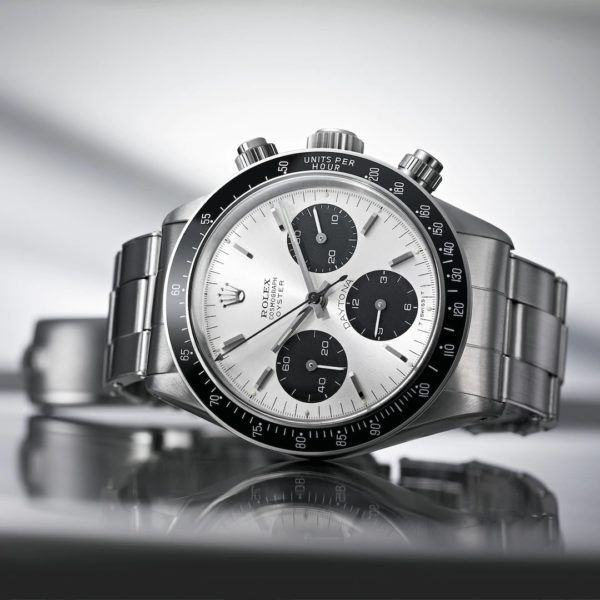
The question is, why are they so evocative?
How – in the age of smart watches – do chronographs continue to speak to watch lovers around the world more than 200 years after they were first invented?
Let’s discover how chronographs work, what each of those little dials is for, and the surprising history that makes them so stylish and functional.
What is a Chronograph?
If you have a watch with two to three smaller dials on the face and one or more buttons extending from the case, you might think you’re wearing a watch. In fact, you’re wearing a chronograph.
“Chronograph” is a GRE word for a timer. Chronographs can be utilized as a stopwatch without interfering with the timekeeping ability of the watch, and they can do it on different time spans (like a minute, an hour, or a day – more on that later).
Chronographs Are A Type Of “Complication”
In watch-speak, chronographs fall under the umbrella of complications – watches that perform more than one function.
Common complications include date-keeping, alarms, and – of course – chronographs for keeping different intervals of time.
Luxury watches may add lunar phases and other, well, complicated stuff as flourishes.
Taken together, the second hand and the sub-dials are a watch’s complications, and perform the stopwatch function that gives a chronograph its name.
The question is, where did chronographs come from? And what can their history tell us about why – visually and functionally – they’ve become so desirable?
The Amazing History Of Chronographs
While the origins of chronographs stretch back to the 1800s, it was the dawn of the aviation and automobile age that brought chronographs to wider popularity.
Race car drivers used chronographs to time laps. Pilots used – and still use – chronographs to time their path over the ground and determine airspeed, among other things. For decades, the military has equipped ship captains and submariners with chronographs to use in navigation. Chronographs are tools for jobs that require measuring time, distance, and speed, similar to how how divers use dive watches to track time submerged.
The list of functions a navigator can perform with a chronograph is remarkable, and feels rugged and self-reliant in an era of ubiquitous GPS: Rule-of-three and square root calculations, time, speed and distance calculations, fuel consumption rate, and turn rate, to name a few.
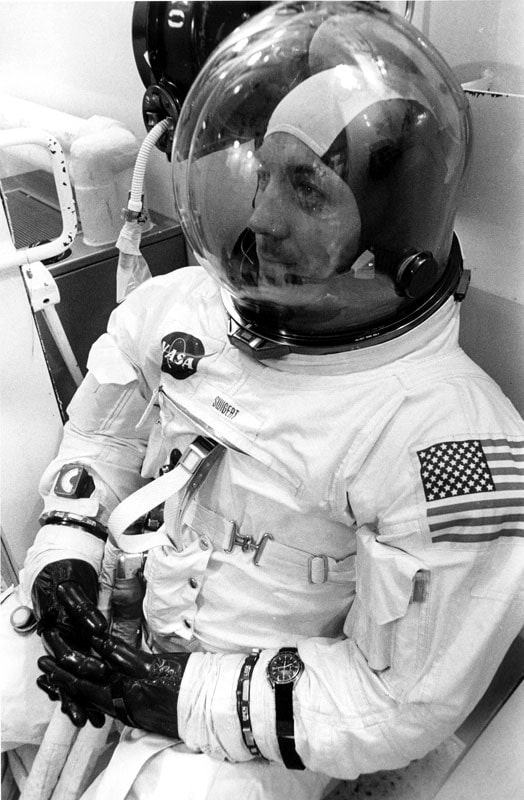

The Most Famous Chronograph Of All Time
The most amazing story of chronographs in action has to be the ill-fated journey of Apollo 13 in 1970.
With their onboard computers fried by an explosion, the astronauts used their chronographs to time a crucial booster burn and avert disaster. Upon their safe return, NASA awarded Omega their prestigious Silver Snoopy Award – given to NASA contractors and employees who make exceptional contributions to flight safety.
Astronaut Jim Lovell recounts the maneuver as written about in Forbes:
(It) was done without our normal navigation equipment. We used the earth as a backline. We could see the earth, we could see the daytime and darkness and that line in between we call it twilight or the terminator,” he said. “We had a crosshair on the window of the lunar module so we could superimpose our crosshair on the earth’s terminator and that positioned the engine of our lunar module so we can make the correct movement to get back into the proper course to make a safe landing back on earth.”
He continued, “We had to burn the engine. Have it on only for a certain length of time: 14 seconds…. We used the (Omega) watch that Jack had on his wrist and I had to control the spacecraft. Jack timed the burn on the engine to make that correction to get back home safely.”
How To Use A Chronograph
Chronographs may look complicated, but using one is simple once you understand how.
Take this (very affordable) Seiko SSB031 for example:
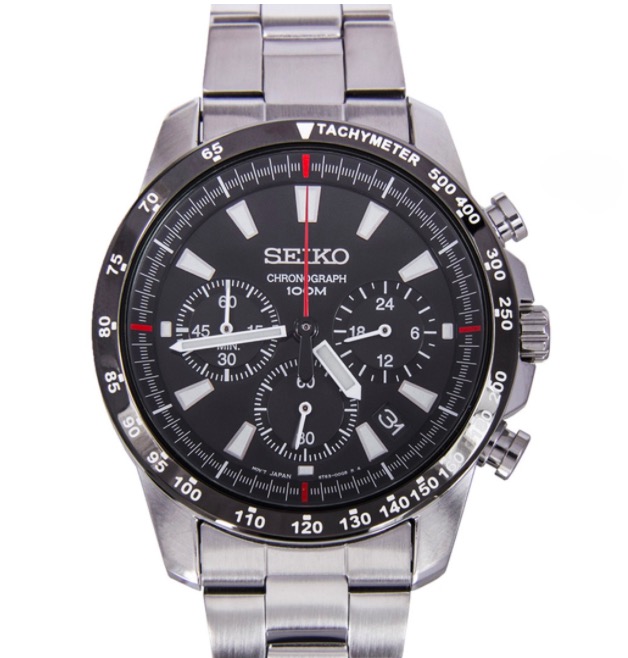

Depressing the upper button starts the timer function.
The three complications – or sub-dials – activate as well, each keeping a different time interval. The dial at 9 o’clock counts up to 60 minutes. The dial at 6 o’clock counts seconds. The dial at 3 o’clock counts up to 24 hours.
It’s worth noting – on this chronograph (and any “real” chronograph) the red “second” hand isn’t for seconds. It’s the timer hand that you use for precise, second-by-second timing.
Depress the lower button to snap the red hand back to 12 o’clock, so you can restart the timing function while the sub-dials continue to count elapsed time.
Nifty, huh?
Keep in mind that every chronograph may operate a little differently or measure different units of time, but in general two push-buttons start, stop, and reset the timing function.
How to Use a Tachymeter on a Watch
One feature of many chronographs you may have noticed is the outermost ring on the bezel, called a tachymeter.
The tachymeter is a scale used to measure speed, distance, or both. Plus, it just looks pro.
How to Measure Speed with a Watch Tachymeter
To measure speed with a tachymeter, you need to know the distance you’re traveling.
Imagine you’re in a car driving down the highway and the speedometer fails, but highway patrol is on the prowl and you want to avoid a speeding ticket.
Take note of the mile markers and the instant you pass by one, press the start button on your chronograph. When you pass the next mile marker, press the stop button and note the number the timer hand is pointing to.
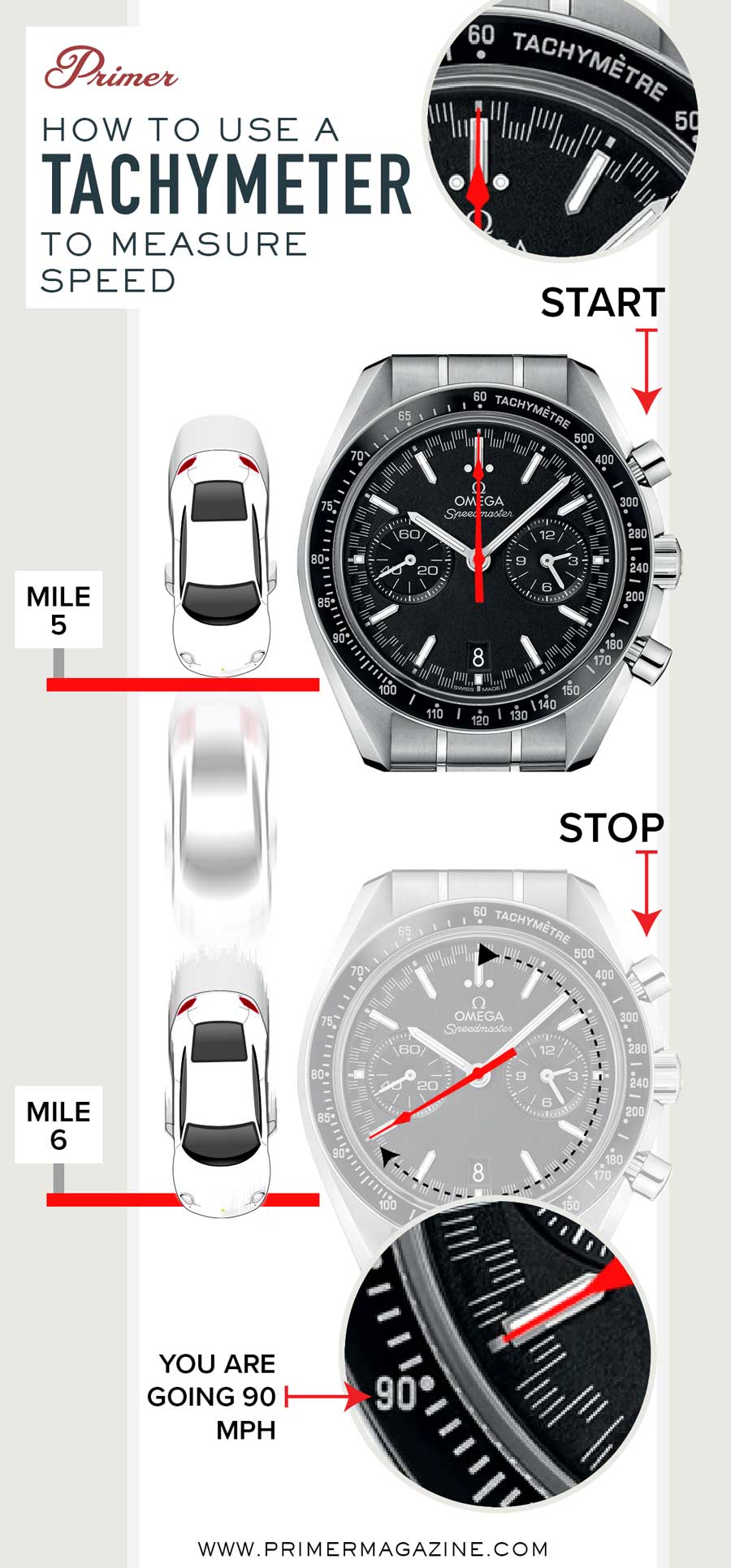

If the timer hand has traveled one full revolution back to 12 o’clock it should be pointing to the “60” on the tachymeter, indicating you’re traveling at 60 mph. If it’s pointing to “80” at the 9 o’clock position, you’re doing a cool 80 mph and better be mindful of the highway patrol.
Note that this function works for both miles per hour and kilometers per hour – as long as you know your unit of distance, the tachymeter will tell you the rate of speed traveled.
How to Measure Distance with a Watch Tachymeter
You can measure distance with a tachymeter by pressing the start hand when you reach a constant, known rate of speed. When the timer hand reaches the number representing your speed on the tachymeter bezel, you know you’ve traveled one mile (or one kilometer, if you’re doing km/h)
For example, imagine you’re driving at a constant, known speed of 70 miles per hour. You pass a known landmark and know you need to travel exactly 1 more mile before your turnoff. Press start on your chronograph and note when the timing hand passes “70” because you’ve just gone one mile.
Do You Need A Chronograph?
If you’re not a racecar driver, horse trainer, or pilot, why might you want such functions?
At any point in your day you need to mark time, a chronograph comes in handy. From resetting your wireless router to getting your peak heart rate to boiling pasta, it’s a useful tool to have on your wrist. Though, you likely have digital tools already at hand that can perform these common functions, also.
From a style perspective they evoke a legacy of discovery, speed, and technical achievement, and the visual complexity and timeless design that give chronographs their enduring appeal.
And, of course, you’ll have a reason to step forward and say, “I can time that for you.”
If you’re not into the airplane instrument aesthetic, luckily, digital watches have become fashionable for the first time since…ever.
Best Chronograph Watch Picks
From Deal To Designer
Citizen AT0200-05E Eco-Drive
Styled with a rugged, field watch band but still a fully functioning chronograph, the clunkily named AT0200-05E is an Eco-Drive – meaning it’s solar powered so you’ll never have to replace the battery. There’s a reason Citizen earned its place in our best watch brands by price guide.
Bulova Lunar Pilot
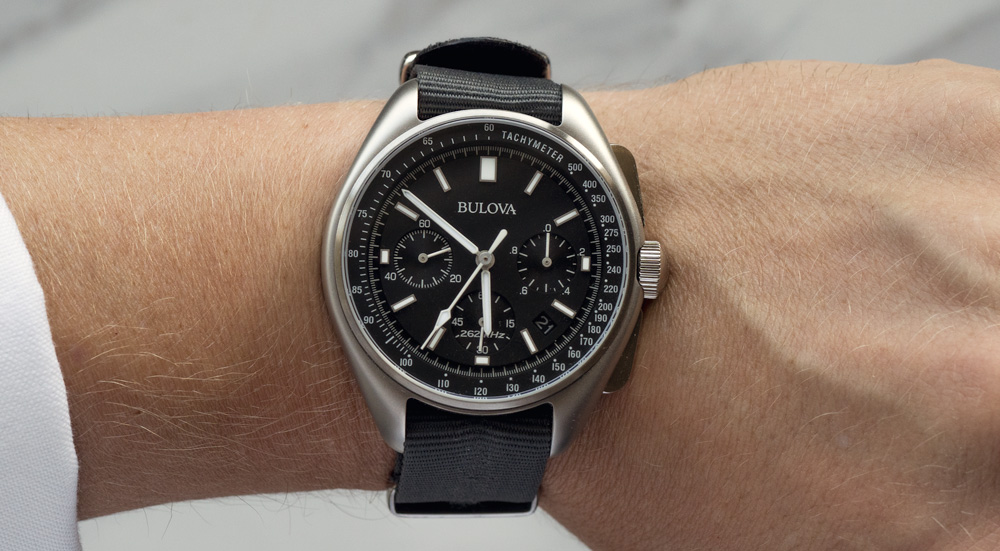

The Bulova Lunar Pilot chronograph, originally designed for the rigors of space travel and famously worn during the Apollo 15 mission in 1971, has etched its place in both horological and space exploration history. Crafted with precision engineering, the watch features a high-performance quartz movement, distinguished by its accuracy and durability. Its sleek, stainless steel case and black dial encapsulate a design that is both functional and stylish, appealing to those who value a timepiece with a storied past and a robust build who are also on a budget. See our full article here.
Tag Heuer Monaco
Closely linked with its most famous wearer Steve McQueen (who raced at Monaco), the square case and two subdials are as iconic now as they were in the 1960s.
Omega Speedmaster
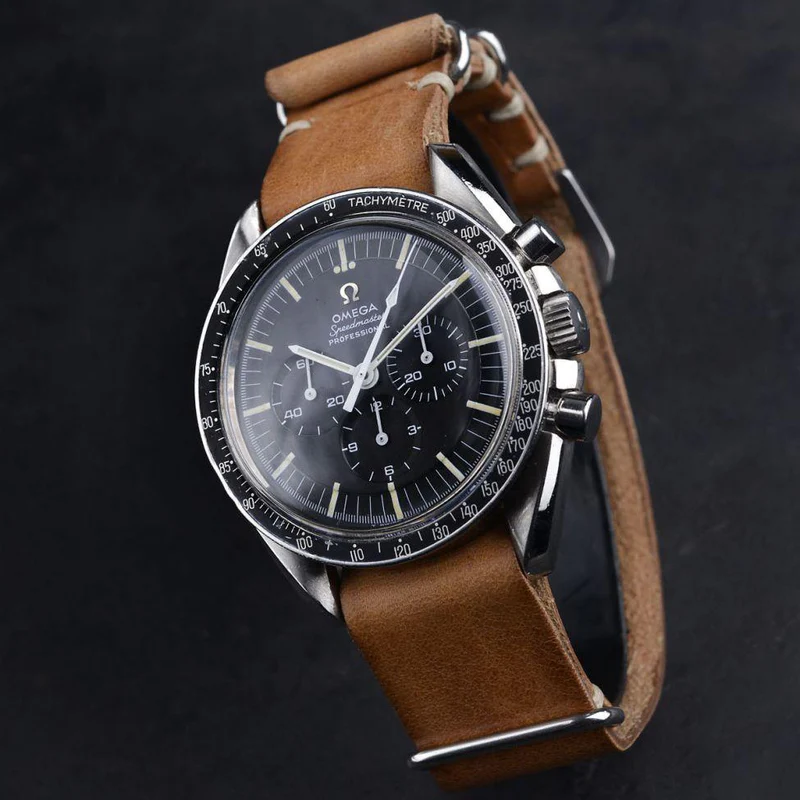

Arguably THE chronograph, the Speedmaster is the very watch that saved the Apollo 13 astronauts during their mission critical engine burn to get back to earth.
Of course, it will set you back the cost of a half-decent used car, but hey – you value precision and heritage, right?
